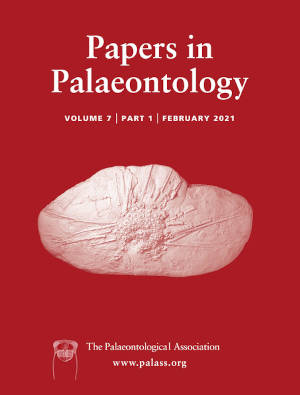Reg. Charity No. 1168330

Dental replacement in Heterodontosauridae has been debated over the last five decades primarily on indirect evidence, such as the development of wear facets and the position of erupted teeth. Direct observation of unerupted teeth provides unambiguous data for understanding tooth replacement but this has been done only for Heterodontosaurus and Fruitadens. This study addresses dental replacement in Manidens condorensis based on the positioning of functional and replacement teeth using microcomputed tomography data, differential wear along the dentition and the differences in labiolingual/apicobasal level of functional teeth. Dental replacement in Manidens condorensis was continuous in an anterior-to-posterior wave pattern, with asynchronous tooth eruption and the addition of new teeth posteriorly to the toothrow during ontogeny. Manidens shows the first evidence of dental replacement for the large dentary caniniform in Heterodontosauridae, which possibly had replacement timing distinct from the cheek dentition. Newly erupted teeth imbricate in a mesial cavity–distal crown base relationship during eruption, so that imbrication of the midposterior dentition remains unaltered during tooth replacement. The presence/absence of a small caniniform tooth in the D3 position of several specimens suggests possible intraspecific dimorphism in Manidens. On longitudinal sections of isolated crowns the histological features such as Howship's lacunae and odontoclast spaces are similar in size to extant reptiles. The differential wear decreasing posteriorly and hypothetical Z-spacing below 2.3 in Manidens are similar to basal ornithischians. Tooth replacement in Heterodontosauridae (and other early ornithischians) provides key information for understanding the dynamics of jaw function and craniomandibular specialization to herbivory.